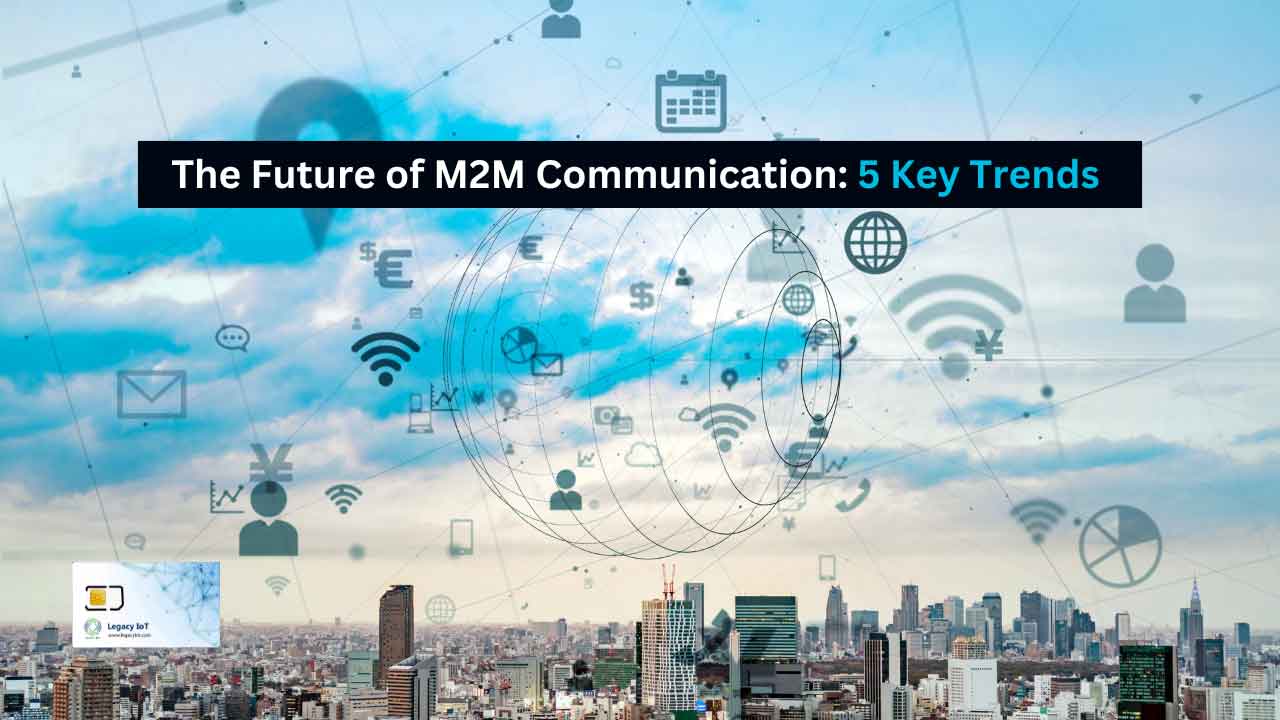The landscape of Machine-to-Machine or M2M communication is undergoing rapid evolution, driven by technological advancements that promise to redefine how devices interact. As industries become increasingly reliant on interconnected systems, the future of M2M communication is set to be shaped by several key trends.
In this blog, we’ll explore the key trends shaping the future of M2M communication, including the impact of 5G technology, the integration of Artificial Intelligence (AI) and Machine Learning (ML), the role of edge computing, the expanding IoT ecosystem, and the necessity of advanced security measures.

These trends will not only enhance the capabilities of M2M technology but also open up new possibilities for innovation and efficiency across various sectors.
1. 5G Technology: Accelerating M2M Connectivity
M2M communication is about to undergo a radical shift with the arrival of 5G technology. With its ultra-fast speeds, lower latency, and enhanced reliability, 5G will enable the seamless connection of billions of devices. This connectivity will be crucial for applications requiring real-time data transmission, such as autonomous vehicles, smart cities, and industrial automation.
5G’s impact on M2M communication extends beyond speed. The network’s ability to handle a massive number of devices simultaneously will support more complex machine interactions, fostering advancements in industries reliant on M2M technology. The improved bandwidth and connectivity will also enable innovations in remote monitoring and control through m2m sim management portal, enhancing the efficiency of M2M systems.
2. Artificial Intelligence (AI) and Machine Learning (ML): Enhancing M2M Capabilities
Artificial Intelligence (AI) and Machine Learning (ML) are set to elevate M2M communication to new heights. By integrating AI and ML into M2M systems, devices can perform more sophisticated data analysis, predictive maintenance, and autonomous decision-making. These technologies enable machines to learn from patterns, optimizing operations without human intervention.
Want to know about the IoT Technology in Artificial Intelligence (AI) vs. Machine Learning (ML)?
For example, in manufacturing, AI-powered M2M systems can predict equipment failures before they occur, reducing downtime and maintenance costs. In the healthcare sector, AI-driven M2M communication can monitor patient data in real-time, providing insights that improve patient care and outcomes. As AI and ML continue to evolve, their integration into M2M systems will unlock unprecedented capabilities and efficiencies.
3. Edge Computing: Enhancing Real-Time Processing
Edge computing represents a paradigm shift in how data is processed and analyzed in M2M communication. By bringing computation closer to the data source, edge computing reduces latency, enabling faster decision-making and more efficient data processing. This is particularly important for applications requiring real-time responses, such as industrial automation and smart grids.
In an M2M context, edge computing allows devices to process data locally, reducing the need for constant communication with centralized servers. This not only improves response times but also decreases the bandwidth required for data transmission. As a result, M2M systems can operate more efficiently, with quicker reaction times to changing conditions.
4. IoT Integration: Expanding the M2M Ecosystem
The Internet of Things (IoT) is rapidly expanding, and with it, the role of M2M communication is becoming increasingly vital. M2M technology facilitates seamless communication between sensors, machines, and systems by acting as the backbone connecting the many IoT devices. This integration will drive innovation across various sectors, from smart homes to industrial IoT, creating more connected and intelligent environments.
As IoT devices become more prevalent, the demand for robust M2M communication will grow. This trend will lead to the development of more advanced M2M solutions capable of supporting the complex interactions required in an IoT ecosystem. In turn, this will enable the creation of smarter, more responsive systems that can adapt to changing conditions in real-time.
5. Advanced Security Measures: Protecting M2M Networks
As M2M communication networks expand, so too does the need for enhanced security measures. The future of M2M will see the implementation of more robust encryption, authentication, and cybersecurity protocols to safeguard against potential threats. Ensuring the integrity and confidentiality of data within M2M systems will be paramount, particularly as these networks become more complex and widespread.
Conclusion: Embracing the Future of M2M Communication
The future of M2M communication is bright, with technological advancements driving the development of more connected, efficient, and secure communication networks with Legacy IoT. As industries continue to embrace these trends, M2M communication will play an increasingly important role in shaping the connected world of tomorrow.
By staying ahead of these trends and investing in the right technologies, organizations can unlock new opportunities for innovation and growth, paving the way for a future where machines communicate seamlessly and autonomously.





